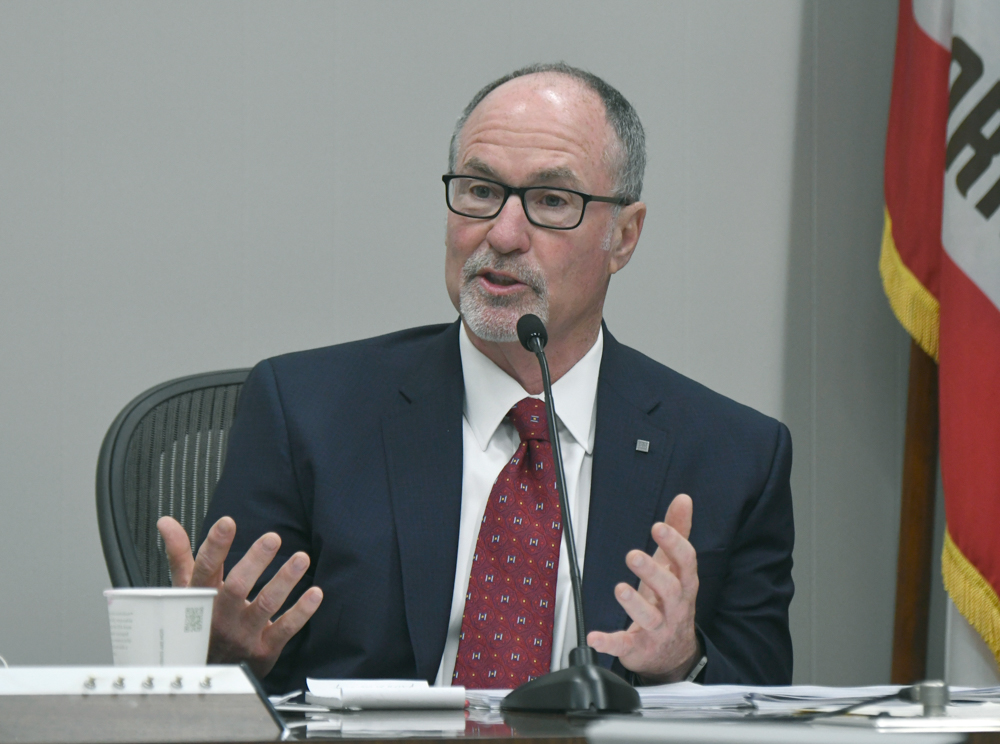City Eyes Union-Only Labor
Policy Would Prioritize Local Crews Over Out-Of-Towners

Santa Barbara contractors are digging in for a pitched battle with City Hall over a newly proposed policy to prioritize the hiring of local unionized workers for major capital construction projects. The proposal came during the council’s September 25 hearing from Councilmember Gregg Hart, who argued a Community Workforce Agreement would ensure high-caliber craftsmanship from trained journeymen. Councilmember Eric Friedman said it would also give a leg up to the Santa Barbara tradespeople who are sometimes squeezed out of jobs by out of town crews.
“We have an obligation to prioritize our local workforce,” Friedman said. “We should put our families in our county and in our city first.”
In a later interview, Hart explained that the city’s current method of selecting the lowest bidder for public-works projects limits its control over quality. He pointed to the desalination plant, originally constructed in the early ’90s and found during its recent renovation to be full of poor planning and shoddy documentation, which required millions in cost overruns to correct. It’s not uncommon, Hart went on, for problems to arise when nonunion contractors use general-skilled workers on speciality projects. “You don’t have a general practitioner do surgery,” he said.
For the first time in a long time, Hart said, the city has the funds ― via new Measure C sales-tax revenue ― to build and fix things. “Let’s make sure we do it right,” he said. “The better constructed building has a longer life and a lower operating cost.” Mayor Cathy Murillo suggested the new police headquarters be the first project to utilize the new policy. Hart also emphasized how unions run apprentice programs that offer training to local workers hungry for a career path, and that Community Workforce Agreements have been successfully adopted all over the state.
Hart’s sentiments were echoed at the meeting by a long line of representatives from pipefitter, sheet-metal, and electrical unions, some of them donning fluorescent safety vests and all heartily endorsing the policy. “Workforce agreements are becoming the way to do business in the state of California,” declared Tony Skinner, secretary-treasurer of the Tri-County Building and Construction Trades Council.
On the other side of the fence, reflecting the inherent tension between unions and big builders, are Santa Barbara’s big general contractors. Frank Schipper Construction Company manager Phil Orr said it’s simply inaccurate, not to mention insulting, for Hart to suggest that nonunion outfits perform inferior work. “For them to insinuate that just because we are nonunion we are not qualified is a slap in the face,” Orr said, noting his company has 30 years of experience under its belt with a robust training program and countless completed contracts for the city, its Housing Authority, the Santa Barbara Unified School District, as well as at the the Lobero Theatre, the Music Academy of the West, and Santa Barbara Zoo.
Orr promised a Community Workforce Agreement would have the opposite effect of its intent. “In concept it all sounds really good, to secure local involvement,” he said. “That’s all fine and dandy when you live in a union town or a big metro area, but we don’t.” A spokesperson for the Santa Barbara Contractors Association confirmed that of its 300 members, general contractors and subcontractors alike, approximately 95 percent are non-union. Santa Barbara will therefore be forced to hire out of the area, especially on large jobs, Orr said. Hart has responded that the city’s ordinance will be carefully molded with that consideration by looking to nearby county or tri-county options if none can be found within city limits.
“I think it’s a horrible idea,” said Bill Shields with Armstrong Associates, which has headed construction on the Moxi Children’s Museum, Cottage Hospital, and Arlington Village. Shields is most worried that prioritizing unions will drive up costs as mobilizing crews from outside the city will add to any project’s bottom line. If the point of hiring union-only is to ensure fair pay for workers, Shields went on, that’s already been accomplished with the city’s “living wage” and state and federal rules that require the payment of union-equivalent or “prevailing wages” to all projects that involve public funds.
The issue will be revisited by the city’s Ordinance Committee at its November 7 meeting. In the meantime, nonunion contractors are meeting individually with council members to plead their case. Hart is trying to get the agreement finalized before he shifts to the Santa Barbara County Board of Supervisors in June. Fellow councilmembers and city staff have expressed skepticism that fast-tracking such a significant ordinance will be possible.



